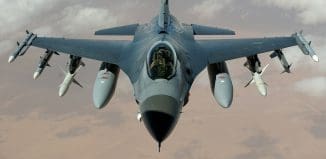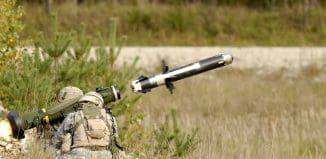The Future Of Situational Awareness
This post is also available in:  עברית (Hebrew)
עברית (Hebrew)
The Defense Advanced Research Projects Agency, or DARPA, has kicked off its Squad X Core Technologies program in a bid to try and improve soldiers and Marines situational awareness in treacherous and degraded environments. Major Christopher Orlowski, DARPA program manager for Squad X, says the program aims to augment troops physical senses via acoustic and visual senses.
DARPA has therefore awarded phase-one contracts to nine defense companies: Helios Remote Sensor Systems, Kitware, Leidos, Lockheed Martin, Raytheon, Scientific Systems Company Inc., Six3 Systems, Inc., SoarTech and SRI International, according to Hackread.
Each of the nine companies are meant to work in one of the four research areas which include precision engagement, non-kinetic engagement, squad sensing and squad autonomy.
 In precision engagement, DARPA is looking for guided munitions capabilities that could be fired from current weapons platforms, Orlowski explained. In non-kinetic engagement, the agency is looking for technology that is able to ‘disrupt enemy command and control, communications and use of unmanned assets at a squad-relevant operational pace’. Squad sensing wise means technology that can sense and detect potential threats 1 km away. Squad sensing was focused on primarily identifying humans and unmanned systems within the environment and then determining whether or not those were threats. For the squad autonomy area, the agency wants members to have at least ‘real-time knowledge of their own and teammates’ locations to less than 6 meters in GPS-denied environments through collaboration with embedded unmanned air and ground systems,” according to a DARPA released statement.
In precision engagement, DARPA is looking for guided munitions capabilities that could be fired from current weapons platforms, Orlowski explained. In non-kinetic engagement, the agency is looking for technology that is able to ‘disrupt enemy command and control, communications and use of unmanned assets at a squad-relevant operational pace’. Squad sensing wise means technology that can sense and detect potential threats 1 km away. Squad sensing was focused on primarily identifying humans and unmanned systems within the environment and then determining whether or not those were threats. For the squad autonomy area, the agency wants members to have at least ‘real-time knowledge of their own and teammates’ locations to less than 6 meters in GPS-denied environments through collaboration with embedded unmanned air and ground systems,” according to a DARPA released statement.
Phase one of the program is expected to last 12 months during which the number of companies will be reduced based on ‘performance and potential contribution to the DARPA mission.’
During the final presentation, the companies will demonstrate to about four soldiers and a Marine in open, in relative simple conditions like in a city, said Orlowski.






























